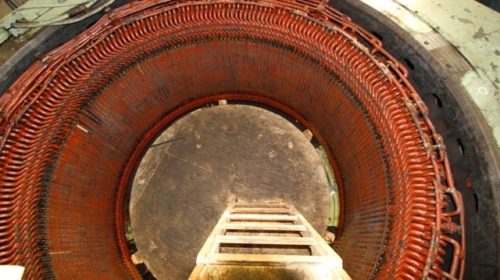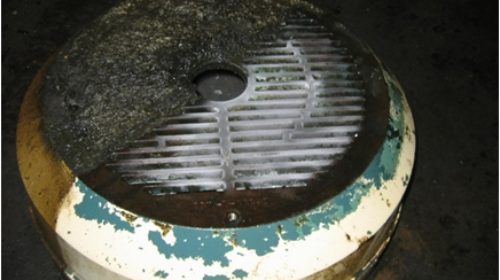
Cleaning times of rubber molds reduced from 6 hours to just 30 minutes
THE SITUATION
Vernay Laboratories, Inc. invented the wax expansion element that revolutionized the automotive thermostat. More than six decades later, the original wax element thermostat is still used in every car on the road. Since its founding, Vernay has developed into a trusted fluid control solutions provider to leading OEM’s and emerging companies in the Automotive, Medical, Consumer/Specialty, Printing and Small Engine industries.
As the industry’s regulatory mandates, emission standards, performance, safety and comfort technologies advance, demands on component performance also increase. Vernay engineers and chemists work to stay ahead of the technology curve by developing advanced formulations to meet new fuels and emission level standards as well as durability and reliability expectations. No matter what the mandate — zero defects, exacting precision, aggressive timetables or saving space by integrating multiple functions into one — Vernay has the specialized knowledge to solve the challenge.
Vernay has production facilities around the world to produce components where needed. Their facilities are ISO-certified to the same exacting standards, ensuring consistent, reliable quality – regardless of where the component is produced. They also offer multi-site, multi-region manufacturing production, reducing the risk of supply chain disruption from unforeseen natural disasters or transportation breakdowns.
Vernay needed a system to clean compression, cold transfer, injection and hot transfer molds. Production tooling is manufactured from various tool steel types, hardness levels and a variety of coatings. Tools tend to weigh from 100lbs to 600lbs.
THE PROBLEM
“When we used our traditional cleaning methods, including ultrasonic and blast media, we are required to pull our molds in order to keep them clean,” said Leroy Milam, Senior Manufacturing Engineer with Vernay. Oftentimes, our blast media and media dust would become entrapped in critical areas of the mold, requiring further cleaning. Our biggest problems were the molds soiling because of the rubber off-gassing and the subsequent productivity loss when molds were taken out of the presses for cleaning,” said Brian Bailey, Facilities Manager with Vernay. Approximately 6-8 hours were lost to remove and clean using the conventional methods. Additional time would also be required to reheat the mold back to production temperatures before the molding process could resume.”
Vernay needed a cleaning solution that would enable them to clean in place, reducing their overall downtime. Personnel safety was also a major concern with tools operating at approximately 220 degrees Celsius.
THE SOLUTION
Cold Jet dry ice cleaning was an attractive solution for Vernay because dry ice cleaning allows for in-place cleaning – without major disassembly or cool down. Dry ice cleaning systems use non-abrasive media in the form of recycled CO2 that won’t damage surfaces or equipment. The combination of dry ice cleaning’s kinetic energy and thermal effects break the connection between the dirt and surface, lifting away the contaminants. Unlike blasting with other media, dry ice cleaning does not leave any secondary waste, as the dry ice particles sublimate – convert from solid to gas – upon impact. Dry ice cleaning is also safe and non-toxic, does not create downstream contamination and reduces or eliminates employee exposure to dangerous chemical cleaning agents.
“The greatest value of the Cold Jet system to our operations has been the ability to extend our running times,” said Bailey. “We no longer have to pull the molds in order to clean them and this has greatly enhanced our productivity.”
A Cold Jet i3 MicroClean® machine was tested for the solution. The i3 MicroClean is portable and was easily positioned for cleaning the molds without interfering with other production operations. The machine is easy to set up and can be universally operated by a variety of operator skill levels. It is also quiet and provides a more efficient use of dry ice and compressed air when compared to the other systems.
One challenge was determining the best nozzle to use for the various molds and also establishing the proper i3 MicroClean machine settings to achieve the best clean. Proper PPE (Personal Protective Equipment) was needed for the larger tools. Vernay began by cleaning the molds with easier shaped geometries – without undercuts or recesses. When they discovered how easily they cleaned, Vernay moved on to more complex tooling, such as their check valve molds and were even able to clean the very small core pin blades, 5 millimeter x 3 meter in diameter, while the molds were still in the press.
“Eventually, we moved to cleaning even our very large 24 inch x 24 inch diaphragm molds,” said Milam. “Using the Cold Jet system allowed us to clean the molds without interrupting the other manufacturing processes around the machine. Pulling molds to clean them the traditional way required moving several pieces of secondary process equipment in order to make room. The portability of the Cold Jet system allowed us to maneuver the system right up to the press and clean the mold in-place. This was critical to meeting our production requirements.”
The i3 MicroClean with an MC29MH nozzle was utilized and overall, 2-4 square feet was cleaned using only ½ block to clean each mold. The total project took 30 minutes to one hour depending on the size of the mold. Vernay completed time studies to compare the cleaning time versus down time when using dry ice instead of their conventional media. Overall, their cleaning times were reduced from more than six hours to just 30 minutes depending upon the mold complexity.
“By reducing the number of times we have to pull the mold, we have also reduced the risk of damaging the molds,” said Milam. “By cleaning in place, we have addressed the operator safety issues associated with pulling a hot mold. One of the most notable gains is the increased productivity by cleaning our molds in-place, thus extending our production runs. We now use the i3 MicroClean in all of our manufacturing facilities.”

